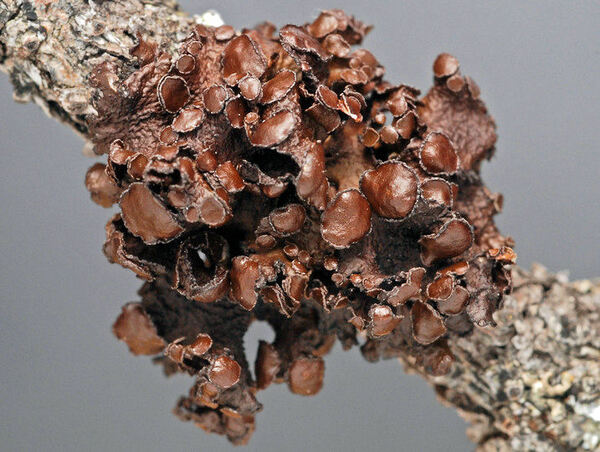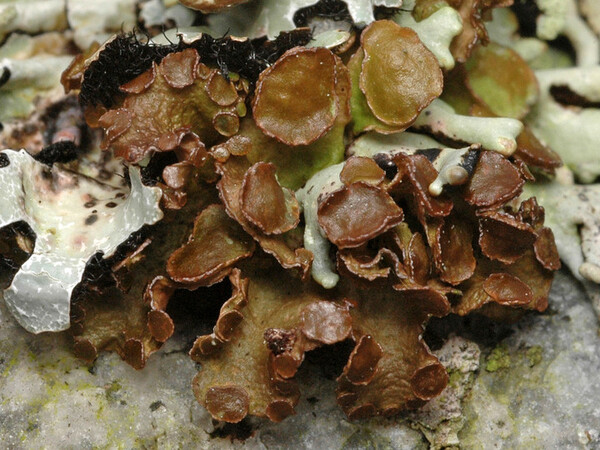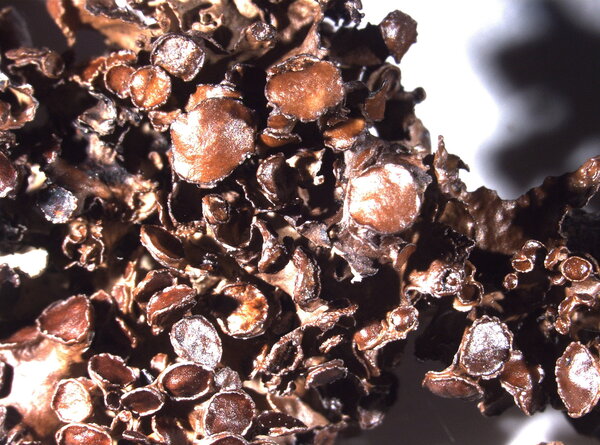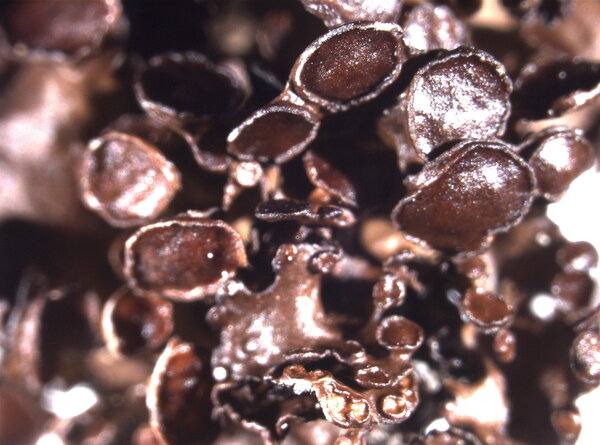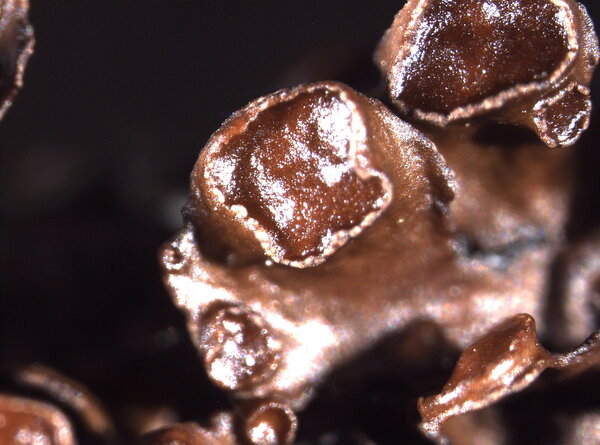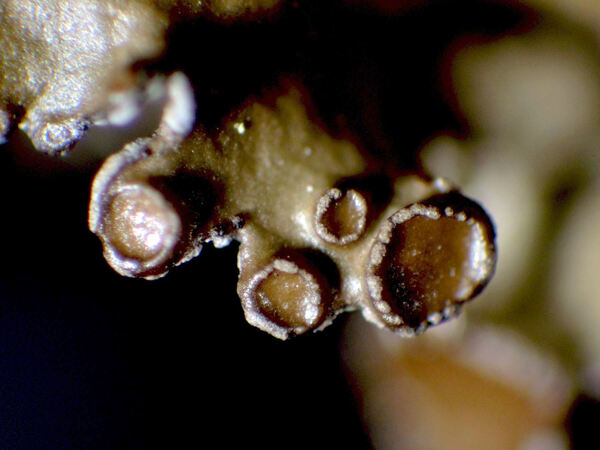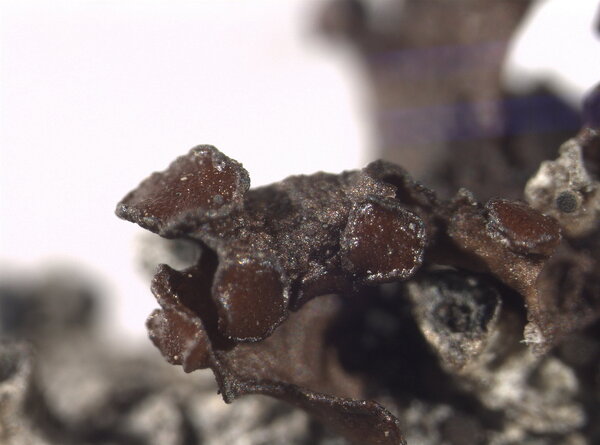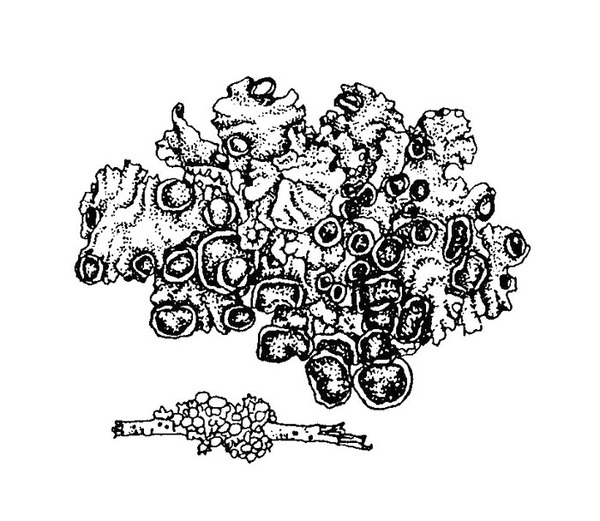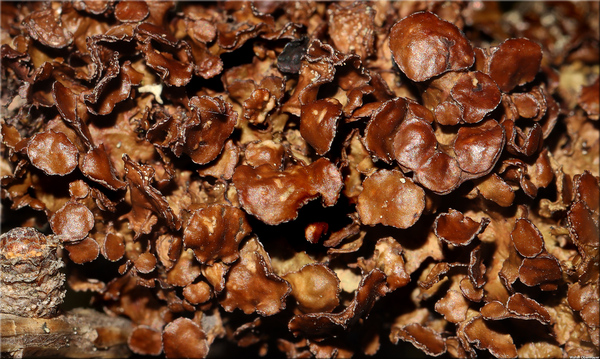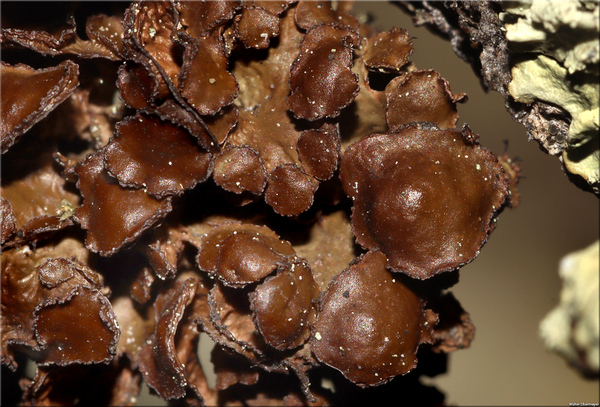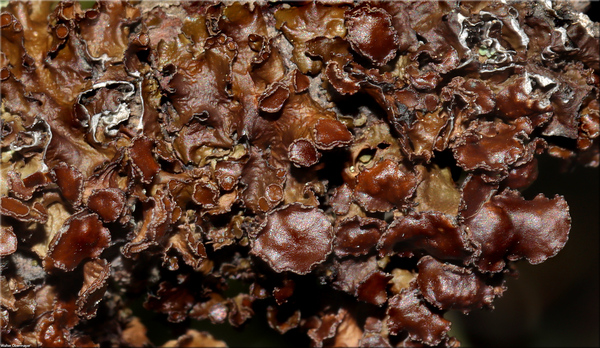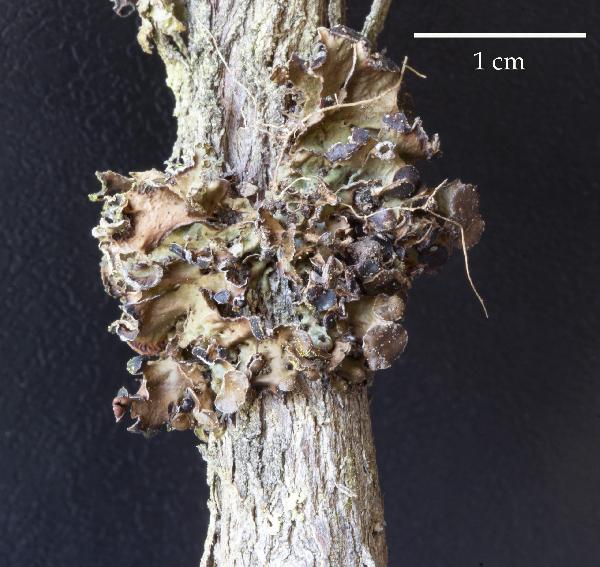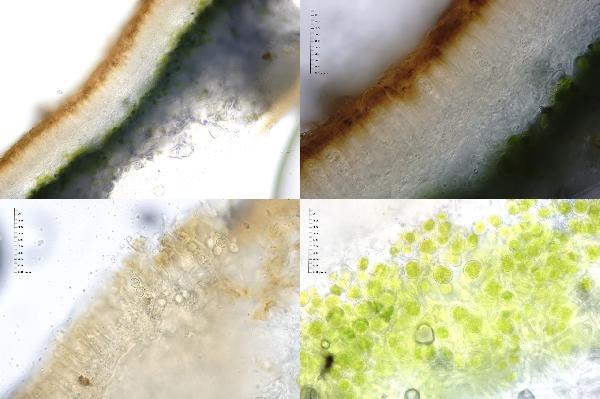Cetraria sepincola (Ehrh.) Ach.
Meth. Lich.: 297, 1803. Basionym: Lichen sepincola Ehrh. - Hannover Mag., 21: 203, 1783.
Synonyms: Cetraria scutata (Wulfen) Poetsch non auct.; Tuckermannopsis sepincola (Ehrh.) Hale
Distribution: N - Frl, Ven (Tretiach 1993), TAA (Caniglia & al. 2002, Nascimbene & al. 2006e, 2007b, 2009, 2022, Nimis & al. 2015), Lomb, Piem (Isocrono & al. 2004), VA (TO 1217), Lig.
Description: Thallus foliose to subfruticose, almost monophyllous, often more thalli appearing together in colonies of small lobes radiating from the substrate, forming 1-2 cm wide, cushion-like tufts. Lobes olivaceous to dark brown, rather glossy, flattened, rounded at apex, up to 10 mm long (usually less), 2-3 mm broad, smooth to wrinkled; lower surface whitish or pale brown, with scattered, simple or sparingly branched rhizines. Upper and lower cortex prosoplectenchymatous, with a non-pored epicortex, the cell walls containing Cetraria-type lichenan; medulla white, rather loose. Apothecia very numerous and often obscuring the lobes, lecanorine, submarginal to terminal, up to 3.5(-4) mm across, with a reddish brown, glossy disc and a thin, smooth to crenulate margin often bearing scattered pseudocyphellae. Epithecium brown; hymenium and hypothecium colourless; paraphyses coherent. Asci 8-spored, narrowly clavate, with a small axial body and a distinct, K/I+ blue ring-structure in the rather large tholus, approaching the Lecanora-type. Ascospores 1-celled, hyaline, ellipsoid, 6-10 x (3.5-)5-7(-10) μm. Pycnidia black, mostly marginal, slightly projecting. Conidia dumbbell-shaped (enlarged at both ends), 5-7 x c. 1 μm. Photobiont chlorococcoid. Spot tests: cortex and medulla K-, C-, KC-, P-, UV-. Chemistry: medulla with lichesterinic and protolichesterinic acid.Note: a subarctic-subalpine, circumpolar species found near treeline on small twigs of shrubs and trees, especially Betula, Alnus alnobetula, Rhododendron ferrugineum, mostly near the ground and in areas with siliceous substrata; confined to the Alps in Italy and very rare in dry areas.
Growth form: Fruticose
Substrata: bark
Photobiont: green algae other than Trentepohlia
Reproductive strategy: mainly sexual
Commonnes-rarity: (info)
Alpine belt: absent
Subalpine belt: rather rare
Oromediterranean belt: absent
Montane belt: absent
Submediterranean belt: absent
Padanian area: absent
Humid submediterranean belt: absent
Humid mediterranean belt: absent
Dry mediterranean belt: absent
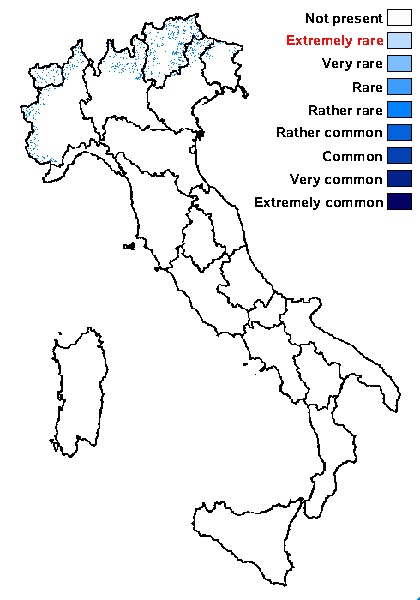
Predictive model
Herbarium samples
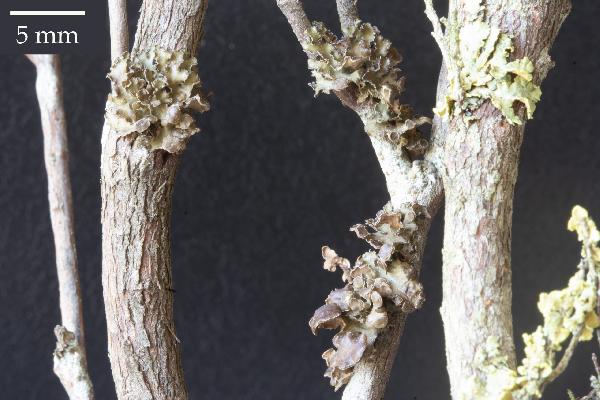
Marta Gonzalez Garcia - Centro de Estudios Micologicos Asturianos
Spain, Puerto de Piedrafita (Asturias), 5-IX-2023, sobre pequeñas ramas de Erica sp. junto a Vulpicida pinastri y Cladonia macroceras.
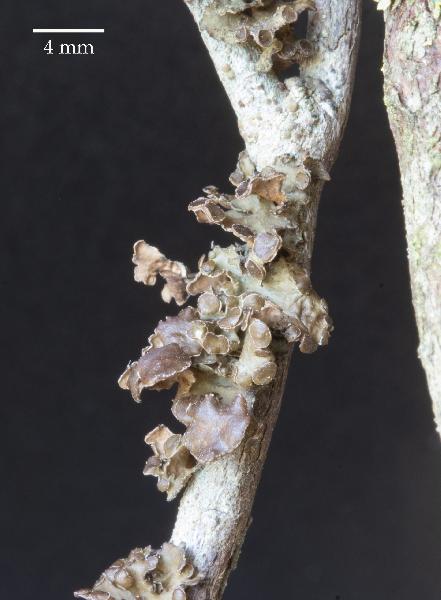
Marta Gonzalez Garcia - Centro de Estudios Micologicos Asturianos
Spain, Puerto de Piedrafita (Asturias), 5-IX-2023, sobre pequeñas ramas de Erica sp. junto a Vulpicida pinastri y Cladonia macroceras.
Growth form: Fruticose
Substrata: bark
Photobiont: green algae other than Trentepohlia
Reproductive strategy: mainly sexual
Commonnes-rarity: (info)
Alpine belt: absent
Subalpine belt: rather rare
Oromediterranean belt: absent
Montane belt: absent
Submediterranean belt: absent
Padanian area: absent
Humid submediterranean belt: absent
Humid mediterranean belt: absent
Dry mediterranean belt: absent

Predictive model
| Herbarium samples |

Marta Gonzalez Garcia - Centro de Estudios Micologicos Asturianos
Spain, Puerto de Piedrafita (Asturias), 5-IX-2023, sobre pequeñas ramas de Erica sp. junto a Vulpicida pinastri y Cladonia macroceras.

 Index Fungorum
Index Fungorum
 GBIF
GBIF
